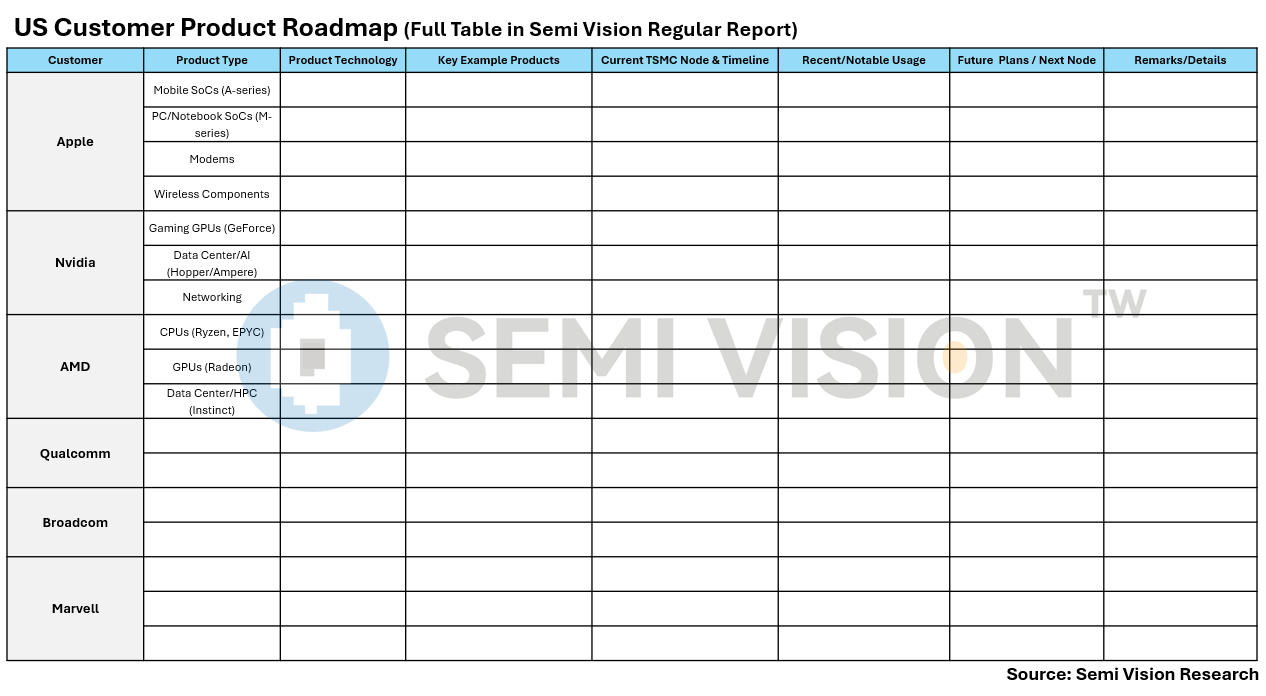TSMC and Nvidia Fuel the Rise of U.S. AI Chips — How the Trump Administration Helped Kickstart America’s Semiconductor Revival
Original Article by SemiVision Research
2025/03/03 CNN: Trump announces Taiwanese chipmaking giant TSMC to invest $100 billion in US manufacturing
C.C. Wei we are now very happy to announce we are going to invest additional 100 billion US dollar in addition to our current 65 billion US dollar site investment in Arizona. We are going to build 3 more new fabs up we promised 3 fabs already. And another 2 advanced packaging fabs and most important, is RD center, also in Arizona. For this all the investment 165 billion, it’s going to create 1,000 of the high paid job as a President just announced.
Political Considerations and Customer Pressure
Due to political factors — particularly the America First policy and pressure from former President Donald Trump on both TSMC and NVIDIA — TSMC accelerated its expansion plans in Arizona.
As mentioned in today’s news, TSMC’s current investment in the U.S. has already reached $165 billion USD, which is a significant amount compared to TSMC’s 2024-2025 capital expenditure.
The primary purpose of U.S.-based manufacturing is to align with the MAGA ("Make America Great Again") agenda, requiring American companies to relocate part of their production back to the U.S.
Apple is also under heavy pressure from the Trump administration and may need to shift part of its production to the U.S. Apple’s product lineup, including iPhones and Mac computers, relies on A-series and M-series chips, which use entirely different packaging processes.
TSMC specifically mentioned in its latest briefing that advanced packaging capabilities would also need to move to the U.S. Currently, the advanced packaging supply chain in the U.S. consists of Amkor and Intel.
Related News:
Apple Will Add 20,000 US Jobs Amid Threat from Trump Tariffs
Nvidia and Broadcom testing chips on Intel manufacturing process, sources say
Capacity Allocation - A Critical Issue
According to SemiVision, TSMC’s Arizona Phase 1 and Phase 2 fabs have significantly lower capacity compared to TSMC’s fabs in Taiwan, mainly due to labor shortages.
The current 4nm and 3nm production capacity in Arizona is primarily allocated to customers such as Apple, NVIDIA, and AMD.
For a more detailed capacity breakdown, please refer to SemiVision’s TSMC Overseas Deployment Report.
Production Ramp-Up Process and Final Capacity
Since the initial production capacity at the Arizona fab will be limited, production will follow the process:
Pilot Run → Risk Run → Production → Mass Production.Ultimately, the final production capacity is expected to reach only about 70% of TSMC’s comparable fabs in Taiwan.
Production Process Flow:
The table effectively explains Nvidia’s Rubin TapeOut progress. If you want to understand more about Nvidia’s chip design concepts and design timeline, you can refer to the SemiVision Report on Nvidia’s chip design process specifications.
NVIDIA’s Production Strategy
NVIDIA may shift a portion of its production to Arizona, but it is expected that about 90% of its products will still be manufactured in Taiwan.
The main reason is that NVIDIA’s products rely heavily on CoWoS packaging, and currently, only UMC, SPIL, and Amkor have CoWoS packaging lines that meet NVIDIA’s requirements.
Related Article:
Nvidia GTC AI Conference Preview: GB300, CPO switches, and NVL288
Process Technology Transfer
TSMC’s Arizona fab currently focuses on 4nm process technology, with preparations already underway for the 3nm process (POR, Process of Record).
In the future, it is highly possible that NVIDIA’s Blackwell (Bwell) chips could be manufactured in Arizona, aligning with the Trump administration’s goal of increasing U.S.-based semiconductor production.
Requalification Process
When design companies transfer production from Taiwan to the U.S., the products must go through a requalification process.
This involves verifying the fab’s production capabilities and ensuring that product quality meets the required standards in actual applications.
The requalification process includes System Level Testing (SLT), such as testing on iPhones, Blackwell series servers, and Hopper series servers.
Cost and Government Subsidies
The cost of manufacturing in the U.S. is expected to be higher than in Taiwan.
However, TSMC plans to offset these costs through government subsidies provided under the CHIPS Act.
For example, if the production cost of a chip in Taiwan is 100 units, and the production cost in the U.S. is 150 units, adding a 25% tariff to the Taiwan-made chip would bring its cost to 125 units.
With subsidies from the CHIPS Act, the cost of the U.S.-made chip could also be reduced to 125 units, creating a cost-neutral scenario for customers and increasing the attractiveness of onshoring production to the U.S..
As TSMC continues to expand its U.S. fab capacity, its production volume will gradually increase.
This supports the Trump administration’s goal of raising the share of U.S.-made semiconductors to as high as 40%.
US Customer Product Roadmap (Full Table in Semi Vision Regular Report)
Current Focus: TSMC's Overseas Wafer Fab Deployment
We have compiled data on TSMC’s overseas fabs, analyzing:
Process nodes
Capacity distribution
Major customers
Product categories
With geopolitical factors influencing semiconductor supply chains, TSMC's overseas expansion will significantly shape the global semiconductor landscape in the coming years.
TSMC’s Next Global Expansion Move: Accelerating Arizona Deployment
As TSMC continues to expand its global footprint, it is accelerating its presence in Arizona (AZ) to strengthen advanced semiconductor production.
For Paid Subscriber Area:
TSMC AZ Fab Status Update
TSMC AZ Status Detail
TSMC & Intel Technology Node Comparison
TSMC Expands Investment in the US: 8 Short-Term Impacts
2025 Foundry Technology Node Summary
TSMC Customer status by Technology Node
TSMC Overseas Foundry Summary
If there are any blank sections in the table and you would like more detailed insights, paid members are welcome to reach out to us via email for further discussion.
We will provide a comprehensive explanation and additional insights upon request.









